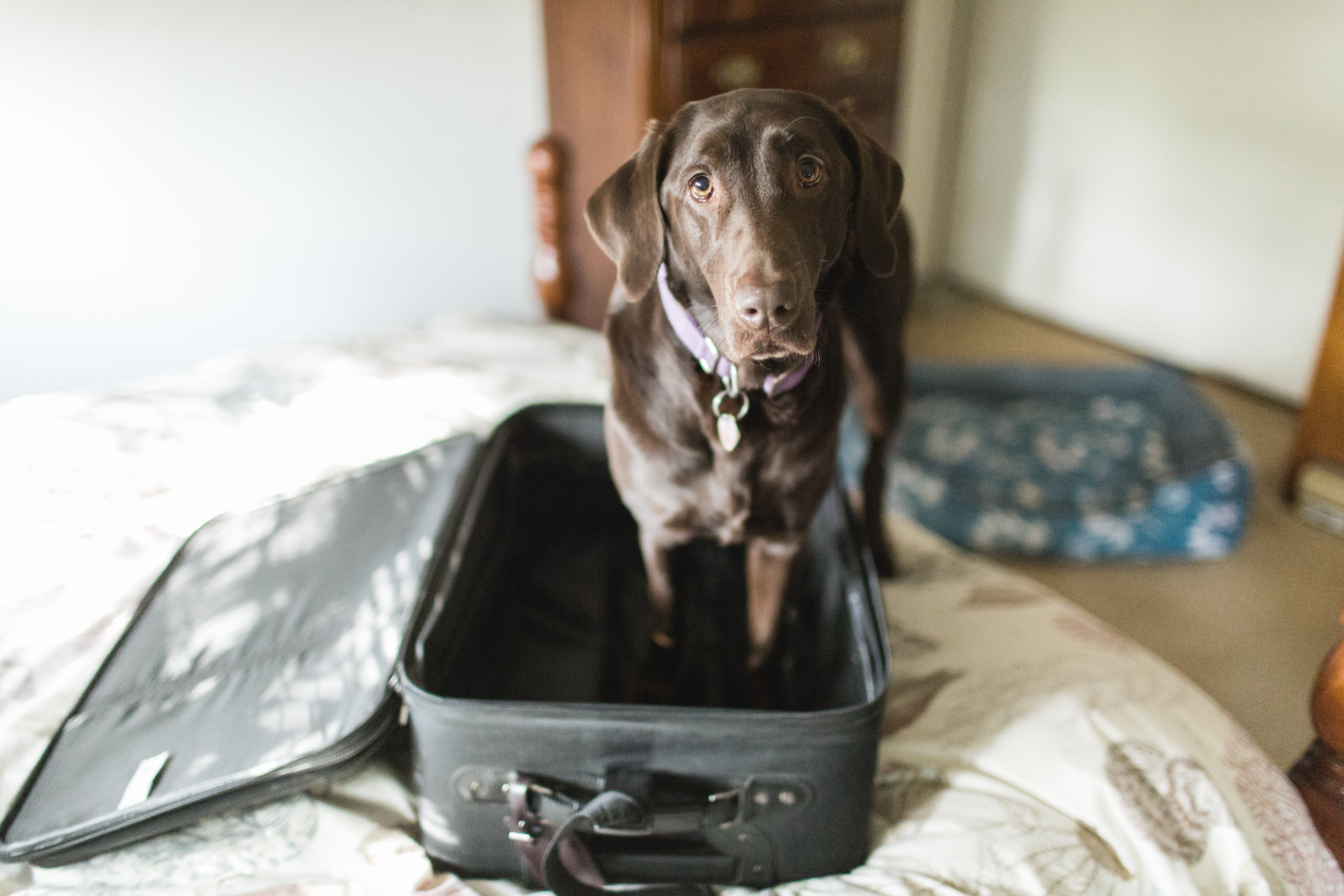Should You Really Travel With Your Pet? Vets Have Thoughts.
It’s not uncommon to see pets on vacation with their humans these days. Many families have discovered some benefits of traveling with pets: strengthening your bond, discovering lovely animal-friendly locations, meeting new people and getting the mental health boost of enjoying the fresh air together.
Going on a trip with your pet also brings major logistical challenges, however. And even the most loving owners have made some ill-informed choices that lead to a less enjoyable experience for all.
Advertisement
Fortunately, there are many ways to make the process of traveling with a furry companion go more smoothly. But just because you can travel with your pet, does that necessarily mean it’s a good idea? We asked veterinarians and an animal welfare professional to share their thoughts on the matter.
“While it can be fun to travel with your pet, it’s a good idea to ask yourself if it’s necessary, will your pet have fun, and are you planning to spend time with them on the trip,” said Erin Askeland, an animal health and behavior consultant at Camp Bow Wow. “Some people just want their pet with them, but they fail to think about all the scenarios when they may be leaving their pet alone in an unfamiliar location or exposing them to activities or conditions where they are not safe or they do not enjoy.”
Consider how bringing a pet on a trip affects the experience and whether any benefits for you or your animal outweigh the challenges.
“Personally, I’m strongly against it,” said Dr. Grant Little, a veterinarian expert with JustAnswer. “It’s a lot of work and stress to be able to bring pets with [you], and when you’re dealing with, for example, international travel, it gets significantly more complicated and sometimes near impossible due to the paperwork and the timelines to get vaccines and tests done. … and if you’re trying to just get it done really quick, you’ll be mistaken and run into issues.”
Advertisement

Purple Collar Pet Photography via Getty Images
It’s also important to be mindful of other things that could reduce stress and risks if prepared for in advance, like considering weather factors that might be uncomfortable or unsafe for the pet.
Dr. Jessica Bell, an associate professor with the veterinary teaching hospital at Washington State University, gave the example of taking a pet to a Fourth of July celebration and how that might be “a poor choice due to your pet’s exposure to high heat,” adding, “Can you pack enough food and water for your pet in the event of extreme weather?”
Bell recommended assessing how you will handle constantly taking care of your pet, monitoring their environment and preventing them from becoming scared or stressed in a new place. Think about how pet-friendly your accommodations will be.
“My family travels frequently with our Labrador retriever, especially camping,” she said. “However, his health and safety are a priority, so we monitor the weather and know our itinerary and where he is allowed to be. If our travel plans are not convenient and safe for him, we plan for him to stay with a friend, family or dog sitter, which he loves too.”
Advertisement
It’s also important to think about the length of time and method of transportation being used for travel.
“Short car journeys may be bearable, but long-distance flights can prove to be exceptionally hard for pets,” said Dr. Ricky Walther, a veterinarian with Pawlicy Advisor, noting that travel also puts pets at a higher risk of infectious disease exposure and other issues.
“Not all pets do very well under the stress of travel. Some may undergo high levels of stress, anxiety or even motion sickness, making travel a bad experience for them,” Walther said. “Other risks to safety may include injuries while on transit or the risk of pets being lost in strange locations.”
“It’s essential to consider your pet’s temperament, health and comfort level before deciding to travel with them.”
Perhaps the most crucial aspect of your travel assessment involves thinking about your individual pet’s particular temperament and circumstances.
Advertisement
“Some pets adapt well to travel and enjoy being with their owners, while others may find it stressful,” Askeland said. “It’s essential to consider your pet’s temperament, health, age and comfort level before deciding to travel with them.”
Additionally, it’s important to set realistic expectations for your pet if you decide to take them on your travels.
“Climbing that mountain to get the Instagram-worthy photo may be top of your agenda, but for your dog who walks more calmly most days, this unrealistic expectation may end up in disappointment,” said Dr. Danielle Bernal, the global veterinarian at Wellness Pet Company. “You know your pet best. If the mountain is still on the must-do list, bringing a pet-friendly backpack where they can rest while you carry them or leaving them at home with a family member may be required.”
Of course, there can be circumstances where traveling with your pet is a favorable option. For instance, a pet who tends to feel anxious in their usual urban environment might thrive on a trip out to the countryside.
“Some pets also appear to be less troubled and more relaxed in this setting if they take the journey along, especially those that are very attached,” Walther said. “This becomes particularly helpful for extended stays or during long trips, which saves the owner from making arrangements for pet sitters or boarding their pets, as they can be expensive and stressful to both the pet and their owners.”
Advertisement
Ultimately, you must try to do what feels right for your animal and make the appropriate preparations.
“Traveling with pets is a practice that widely varies depending on the individual pet and the specific conditions of the journey,” Walther said. “This decision should always have in mind the best interests of the pet with regard to health, safety and comfort.”

Comments are closed.